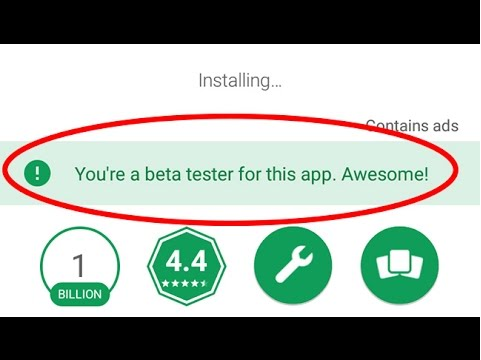One dream of any software product owner is shipping a product that would have zero bugs/issues 🙂Well, this situation can only be imagined in wildest dreams since bugs and features go hand-in-hand.
Though a number of testing practices and methodologies exist in the market, there is still scope to utilize the collective potential of the testers available in the market. Well, what does that happen?
Akin to crowdfunding where people from different parts of the world contribute funds for a project, there is a possibility to use crowd-based testing. This is termed as crowdsourced (or crowd) testing where developers and companies use a group of people, predominantly testers, for testing their product features in order to locate bugs and accelerate the release velocity!
Crowd testing services offered by experienced QA vendors like KiwiQA can be leveraged to make the most out of the said testing approach. The community of users and testers bring a fresh perspective to product testing. Crowd testing is not only limited to testing mobile applications but it can also be extended to testing web applications as well.
The intent of crowd testing and beta testing is to locate bugs by providing the actual users access to the final product. But, there is a twist in the tale as there are significant differences between the two testing approaches. By the end of this blog, you would have answer to some of the crucial questions related to crowd testing and beta testing:
- Are crowd testing and beta testing the same?
- When to choose crowd testing over beta testing & vice-versa?
- Are there any benefits if smaller projects go through numerous cycles of crowd testing?
- Can beta testing and crowd testing go hand-in-hand?
So, let’s deep dive into the integral aspects of crowd testing and beta testing…
What is Crowd Testing?
As the name indicates, crowd testing is an approach in testing where the product features are tested by a crowd of testers that may(or may not be) scattered across the globe. The intent of crowd testing is to get the product features tested from different (and fresh) perspectives.
It lets companies take advantage of the collective intelligence of the global/local testing community. Crowd testing must be considered when the product features are stable and ready to be tested by a wider QA audience.
The community of crowd testers can consist of testers from varied backgrounds and experience. This lets companies unearth bugs that are normally not spotted in the traditional testing process.
Also Read – Go-to Guide for Crowd Testing
What is Beta Testing?
Beta testing is similar to crowd testing since the intent of running beta programs is to unearth product bugs by placing the ‘near’ final product in the hands of the testers. It is also a part of the CV (Customer Validation) phase since the identified bugs are fixed on a priority basis.
So, what is the major difference between crowd testing and beta testing? In beta testing, testers are the potential users belonging to the target market. Beta testing is normally conducted after an NDA (Non-Disclosure Agreement) is signed by the users/testers. It is normally conducted after the Alpha Testing stage.
Like crowd testing, beta testing also helps in identifying bugs before the actual users of the product identify them. All in all, both these testing practices help organizations ship a superlative product to the market.
An experienced crowd testing company having expertise with outsourced beta testing can do wonders for the organization looking to up their efforts on software product testing.
Also Read – Top 10 Beta Testing Strategies for Beginners
When to choose Crowd Testing?
Crowd testing can be chosen when the in-house QA teams want to horizontally extend the exploratory testing strategy. The reason is because the tests conducted by the crowd testers are normally not documented in the test plan! They may (or may not) follow the traditional testing rule book.
Testers have the flexibility of testing a particular feature or a slew of features, irrespective of the underlying complexity involved in them. In ideal scenarios, crowd testers are provided shorter testing windows so that they can report bugs at a faster pace.
The in-house QA team assigns bug severity to the relevant bugs, post which they are assigned to the respective developers in the team.
Also Read – Business Benefits Of Crowd Testing
When to choose Beta Testing?
Beta testing is normally chosen when you want the product/feature to be tested by your potential customers/users. Opening up beta trials not only helps in locating bugs and improving the end-user experience, but also helps in generating curiosity with the target audience.

Source
For instance, a lot of mobile app companies pre-release selective features for beta testing so that early adopters can help in testing the same. It is always recommended to beta test a product/feature before its official launch so that the intended customers get their hands on a thoroughly tested product [Source].
Depending on the complexity, the beta testing window can be kept open for close to 2-3 weeks. Beta testing also helps in creating a FOMO (Fear Of Missing Out) with the other product users who are not a part of the Beta program. Organizations can also look at providing some compensation/certificate to the beta testers on the basis of issues reported by them.
Depending on the severity of bugs, the in-house QA team can also opt for Gamma Testing where the product is expected to have much better quality.
This is because bugs reported in the Beta testing phase would have been fixed in the product released in the Gamma testing phase.
Major Differences Between Crowd Testing and Beta Testing
Now that we have covered the similarities between both the testing methodologies, let’s deep dive into the differences.
Target Testers
The purpose of both crowd testing as well as beta testing is to identify bugs and make the product quality better. However, the major difference lies in the testers being selected for the mission 🙂
In beta testing, the testers are the actual users from the target market. On the other hand, crowd testers are generic testers who may not be users from the target market.
Testing Timelines
In crowd testing, the duration of test cycles lasts only a few days/weeks. On the other hand, the duration of tests in beta testing can span more than weeks/months depending on the complexity of the features under testing.
Generally, the crowd testers are paid for the testing whereas beta testers are passionate product users (or early adopters) who are inclined to make the product experience better for everyone.
Conclusion
Both beta testing and crowd testing are a part of the Customer Validation (CV) phase. Though both techniques are instrumental in improving the product quality, the differences lie in the manner in which testing duration and outcome of the tests.
It is always better to onboard an experienced QA vendor that has experience in providing crowd testing services so that you can make the most out of the two testing approaches.










